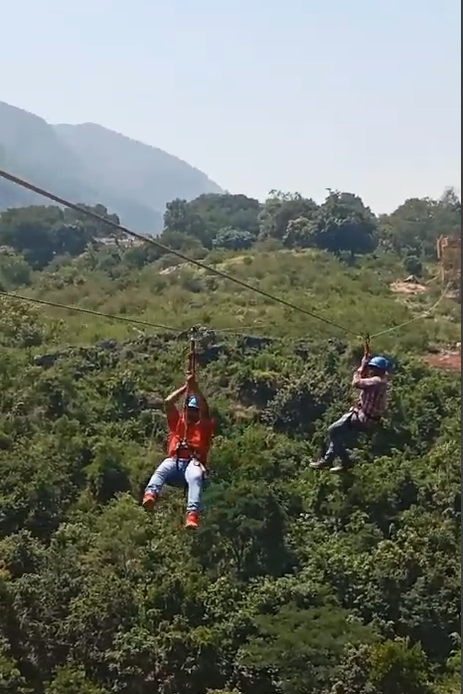
Is the use of Hard Copy maps and literature during travel coming to an end?
Letting go!
We collect catalogues with joy as we travel. We like to keep a record of where we go and what we experience. We pack them into our suitcases and cart them home hoping that we do not have to pay extra for the overweight luggage. Once we get home we browse through them to write our diaries and tell our friends and relatives what we saw and what the salient parts of our travel were.
But after we travel for some time we gather a baggage of material that takes up place in the house. Occasionally, despite the sentimental value, we have to get rid of the extra catalogues. This makes us think, if the age of hard copies of maps and catalogues has come to an end. In the digital age, where information is readily available online, the role of hard copy maps, catalogues, and other printed materials in tourism has indeed evolved. Here are some advantages and disadvantages of using hard copy maps and catalogues:
Advantages of hard copy maps and catalogues:
- Tangible and tactile experience: Hard copy maps and catalogues offer a physical presence that can enhance the overall travel experience. They allow tourists to interact with the materials directly, giving a sense of exploration and discovery.
- Offline accessibility: Printed materials do not require an internet connection, making them accessible in remote areas or places with limited connectivity. Travellers can refer to maps and catalogues anytime, regardless of internet availability.
- Easy to navigate: Some people find it easier to navigate using physical maps rather than digital alternatives. Maps provide a comprehensive overview of an area, allowing tourists to plan routes and landmarks more effectively.
- Cultural insights: Printed catalogues often provide valuable cultural information, historical background, and local tips that might not be readily available online. They can offer a deeper understanding of the destination's heritage, traditions, and attractions.
Disadvantages of hard copy maps and catalogues:
- Outdated information: Printed materials can become quickly outdated as attractions, restaurants, and transportation options change. Online sources are typically more up-to-date, offering real-time information on openings, closures, and updated schedules.
- Limited portability: Carrying physical maps and catalogues can be cumbersome, especially when traveling to multiple destinations. They take up space and add weight to luggage, which can be inconvenient for some travellers.
- Lack of interactivity: Printed materials are static and lack the interactivity and dynamic features that online platforms provide. Digital maps often offer real-time navigation, interactive elements, and personalized recommendations based on user preferences.
- Environmental impact: Producing large quantities of printed materials has an ecological footprint. The use of paper, ink, and transportation for distribution contribute to deforestation and carbon emissions. Choosing digital alternatives can be more environmentally friendly.
In summary, while hard copy maps and catalogues still offer certain advantages, their relevance has diminished in the era of digital information. Online platforms provide convenience, real-time updates, interactivity, and a more sustainable approach to accessing travel information. However, some individuals still appreciate the tactile experience and cultural insights offered by printed materials, and they can serve as valuable keepsakes for some travellers. Ultimately, the choice between hard copy and digital resources depends on personal preferences, accessibility, and the specific needs of each traveller.
Preserving Nature's Treasures: A Call for Environmental Stewardship in Visakhapatnam's Adventure Tourism
Visakhapatnam, an enchanting coastal city nestled on India's eastern shores, offers an array of thrilling adventures amidst its breath-taking landscapes. However, as we immerse ourselves in the wonders of Visakhapatnam's adventure tourism; we must become steadfast environmental stewards, committed to the preservation of its natural treasures.
Whether scuba diving in Rushikonda Beach or trekking through the Eastern Ghats, let us prioritize the conservation of fragile ecosystems. Respecting coral reefs, avoiding contact with marine life, and ensuring responsible waste management are essential to safeguarding the underwater world's delicate balance.
As surfers ride the waves at Rushikonda Beach, let us nurture a deep reverence for the ocean. Adopting eco-friendly practices, reducing plastic waste, and participating in beach clean-ups are fundamental steps toward preserving the pristine coastline and its rich biodiversity.
While conquering the peaks of the Eastern Ghats, like Jindagada, let us tread lightly and leave no trace of our presence. Respecting flora and fauna, staying on designated trails, and refraining from littering or damaging natural habitats are vital for maintaining the ecological integrity of these majestic landscapes.
Kambalakonda Wildlife Sanctuary, a sanctuary of natural beauty, demands our utmost respect. Respecting wildlife habitats, keeping a safe distance, and supporting local conservation efforts are integral to protecting the sanctuary's diverse species and maintaining their natural habitats.
As adventure enthusiasts and visitors, we have the power to inspire change. Let us engage in responsible tourism, advocating for sustainable practices and supporting initiatives that empower local communities. By embracing our role as environmental custodians, we can ensure that future generations can revel in the awe-inspiring beauty of Visakhapatnam's natural wonders.

